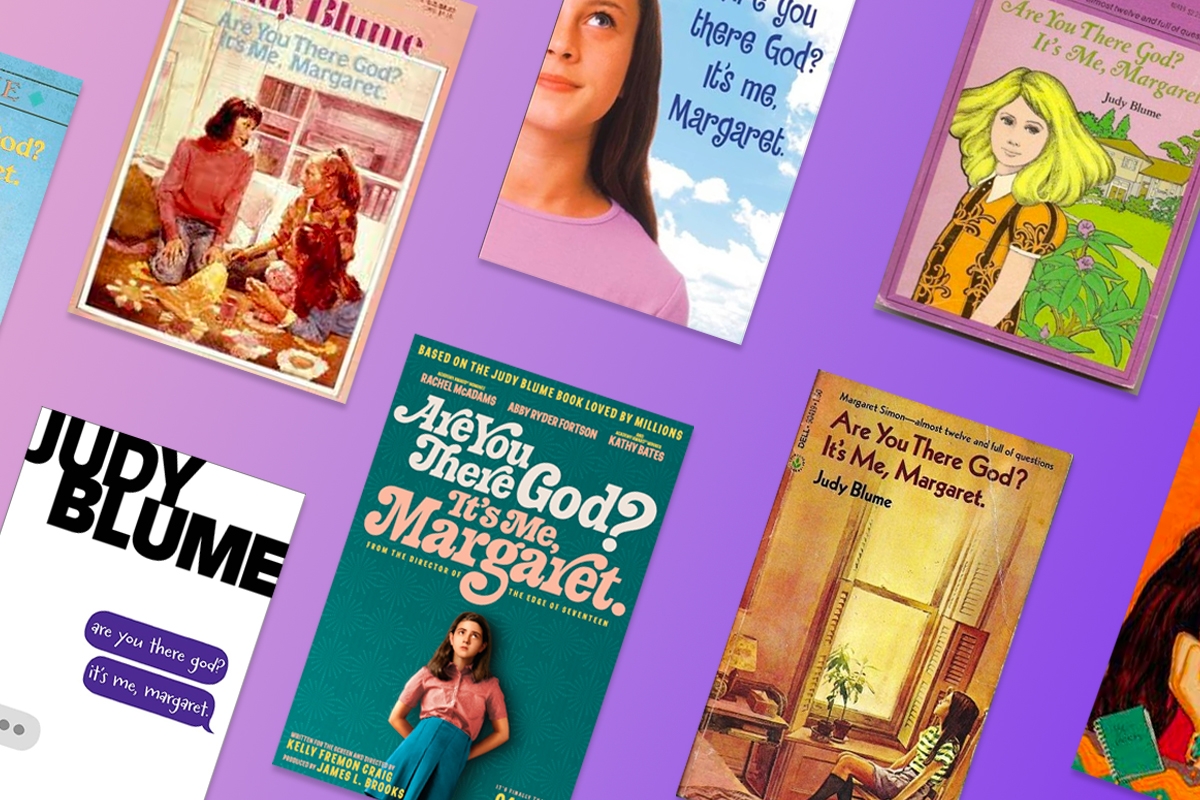I was clearly the original target audience for Judy Blume’s “Are You There God? It’s Me, Margaret.”
When the novel came out in 1970, I was an interfaith kid heading into puberty. And yes indeed, I found the book transgressive and thrilling, for the frank way it addressed boy crushes, mean girls, trying on your first bra and waiting to get your period. I have a visceral memory of lying on the blue-and-green shag carpet on my bedroom floor, breathlessly turning the pages of this book. So, I was not surprised when it became a beloved and iconic touchstone for generations of preteen girls.
But did I relate to the novel’s other subplot, about being born to a Jewish father and a Christian mother? Not so much. While I was born to a Jewish father and a Christian mother, I never bought this novel’s storyline about the stress and confusion of being an interfaith kid. It did not align with the reality of my experience. I have surveyed, interviewed and coached hundreds of interfaith family members in the process of writing two books on the topic. I know that many interfaith families have harmonious experiences. In fact, I fear that the popularity of this novel — which is finally coming to the big screen later this month — has added to the myth of the stressed and confused interfaith child.
To refresh your memory (assuming you also devoured this book as a preteen), while Margaret’s parents each come from different religious backgrounds, they leave it up to their daughter to choose a religion (or none). From the very first chapter, Margaret makes it plain that her favorite family member is her spunky and affectionate Jewish grandmother. In contrast, her Christian grandparents have refused to accept her Jewish father. In fact, Margaret has never even met these Christian grandparents.
Personally, I adored my Christian grandparents, even though I was being raised “exclusively Jewish.” We traveled to be with them on virtually every school vacation, including at Christmas. And they supported the decision of my parents to raise Jewish children. A generation later, my husband and I chose to raise our children, who are now adults, with both family religions. Have cold and intransigent Christian grandparents like Margaret’s ever existed in real life? Probably. But in my experience, Christian grandparents of interfaith kids tend to either be proud, or at least supportive, or just curious but not mean, about their Jewish or “raised with both” grandchildren.
The other problematic plot line for me is Margaret’s interfaith dilemma — her stress, confusion and pressure to choose a religion. Let me be clear: Margaret is in a dilemma. But her dilemma is not that she’s an interfaith kid. Her dilemma is having parents who have withheld any interfaith education from their child, while simultaneously laying the groundwork for her to feel pressure to choose one religion.
It turns out that Margaret has never set foot in a synagogue or church. At the same time, her secular parents have set up the expectation that Margaret can or should choose a religion on her own, without providing any intellectual or spiritual framework for that choice. And a child who says she has never heard of a yarmulke, who has been given zero religious literacy, has no basis for any eventual choice.
So at age 11, Margaret bravely sets out to attempt to give herself an interfaith education, as part of a school project. She visits her grandmother’s synagogue once, a Presbyterian church, a Methodist church and a Catholic Church. None of these is a spiritual experience for her. And why would they be? Because she has zero understanding of what is going on, she has zero context to inform what she is seeing. As a result, she is bored, and ends up counting different colored hats worn by the synagogue and church ladies.
At the end of the novel, Margaret writes to her teacher, “I have not really enjoyed my religious experiments very much.” She then adds, “If I should ever have children, I will tell them what religion they are, so they can start learning about it at an early age.” The author’s prescription is clear: Choose one religion for your interfaith child.
And yet, in the three generations of my interfaith family, no one has had a Margaret-style crisis of stress or confusion. That’s because we have prioritized religious literacy (whether in one religion, or both) and time spent with extended family of all religions. I realize every interfaith family story is unique. But because this one story, Margaret’s story, has such a high profile, I fear that it has had, and will continue to have, undue influence.
I do not know how the “Are You There, God? It’s Me, Margaret” film adaptation will handle the interfaith storyline. But I do know that, more than 50 years since the novel was written, the majority of non-Orthodox Jews live in interfaith families. I know about the benefits of providing interfaith literacy and bonds of affection with multiple religious heritages. I know that all human beings, not just interfaith children, grow up to make their own decisions about religious and spiritual belief and practices. And I know that being raised in an interfaith family does not present children with an inherent dilemma. In 2023, interfaith kids are everywhere, and they are changing the way we think about religious identity in America.








